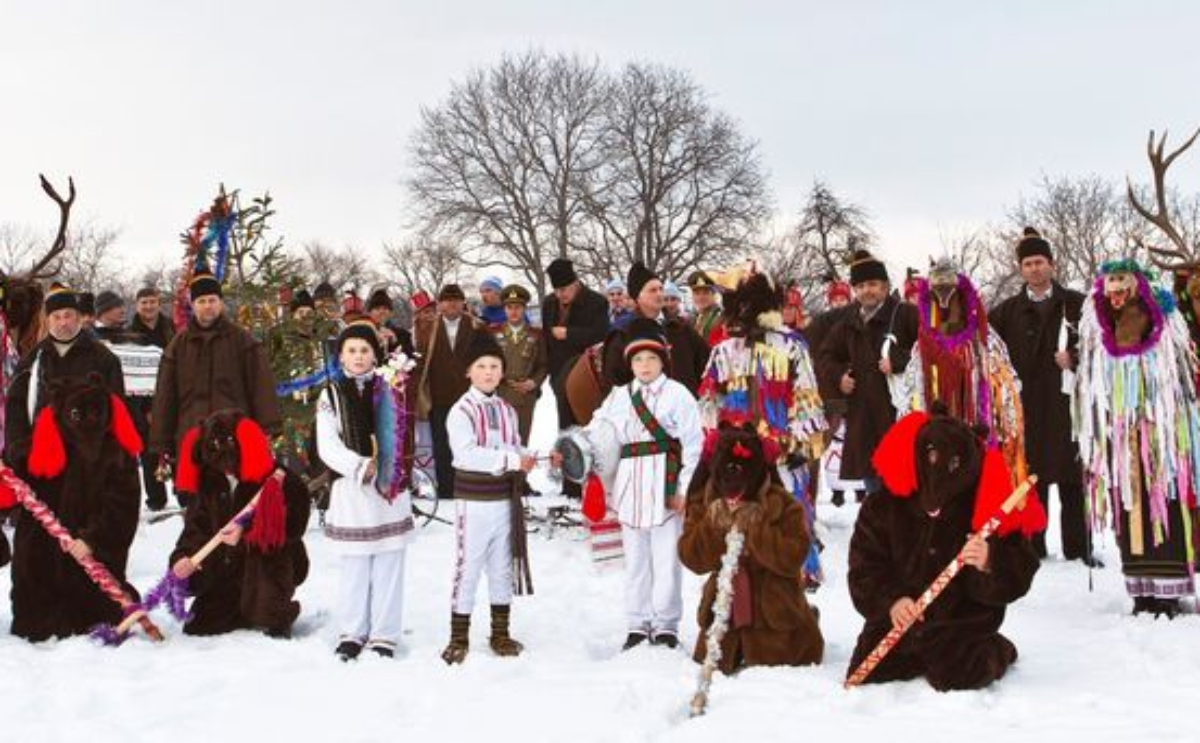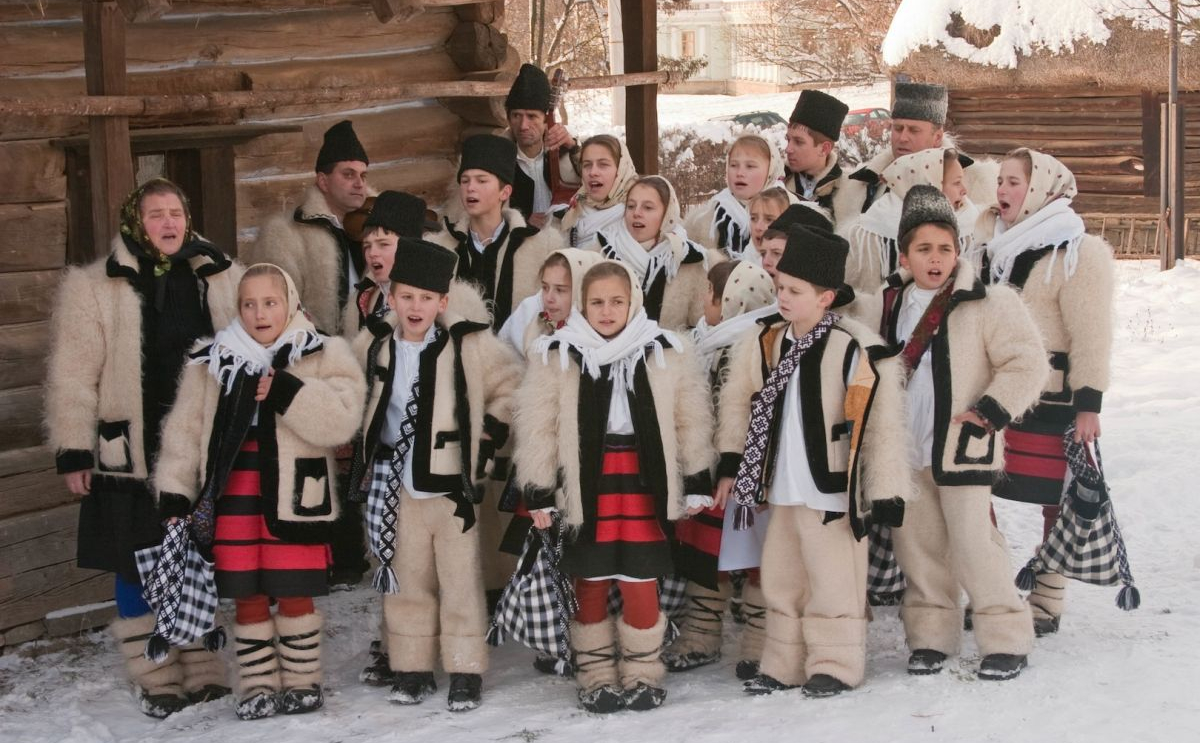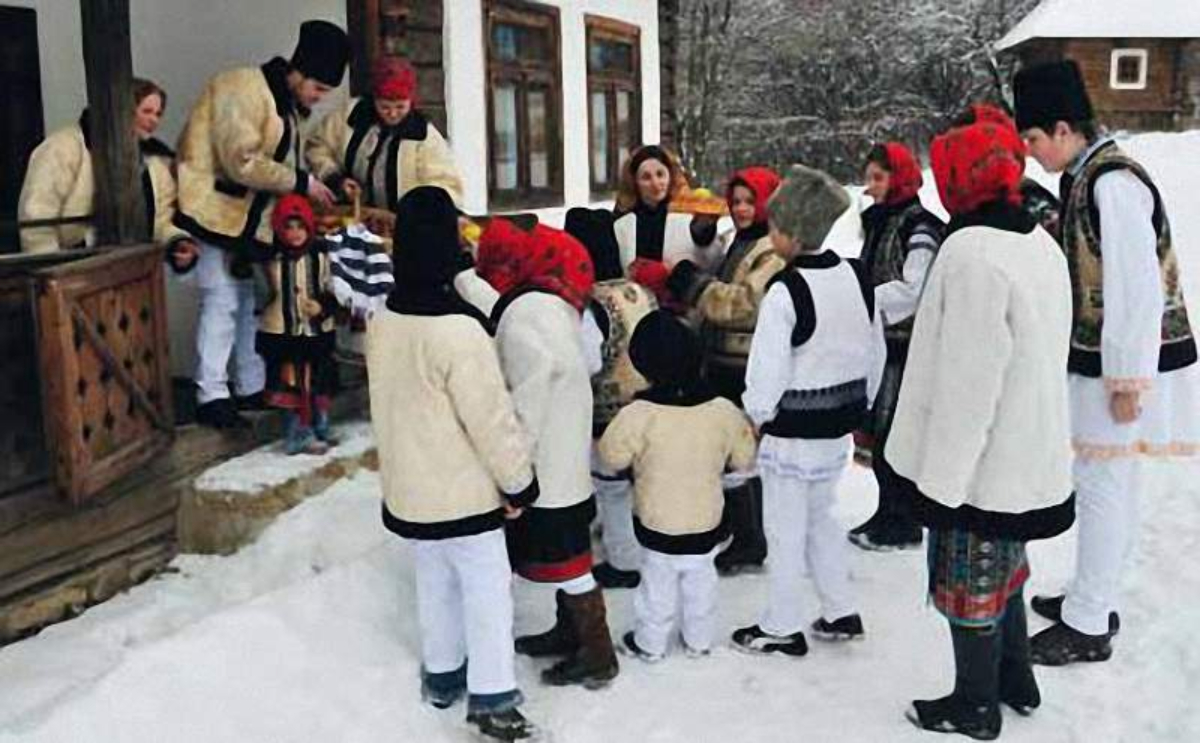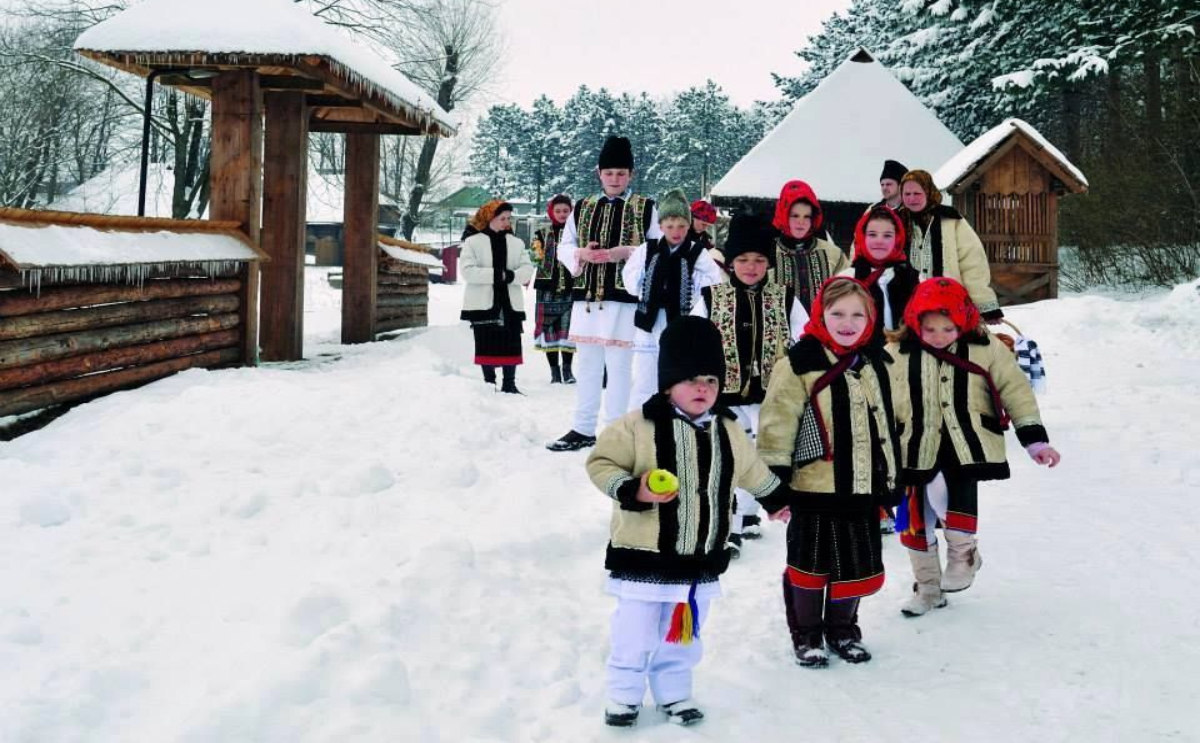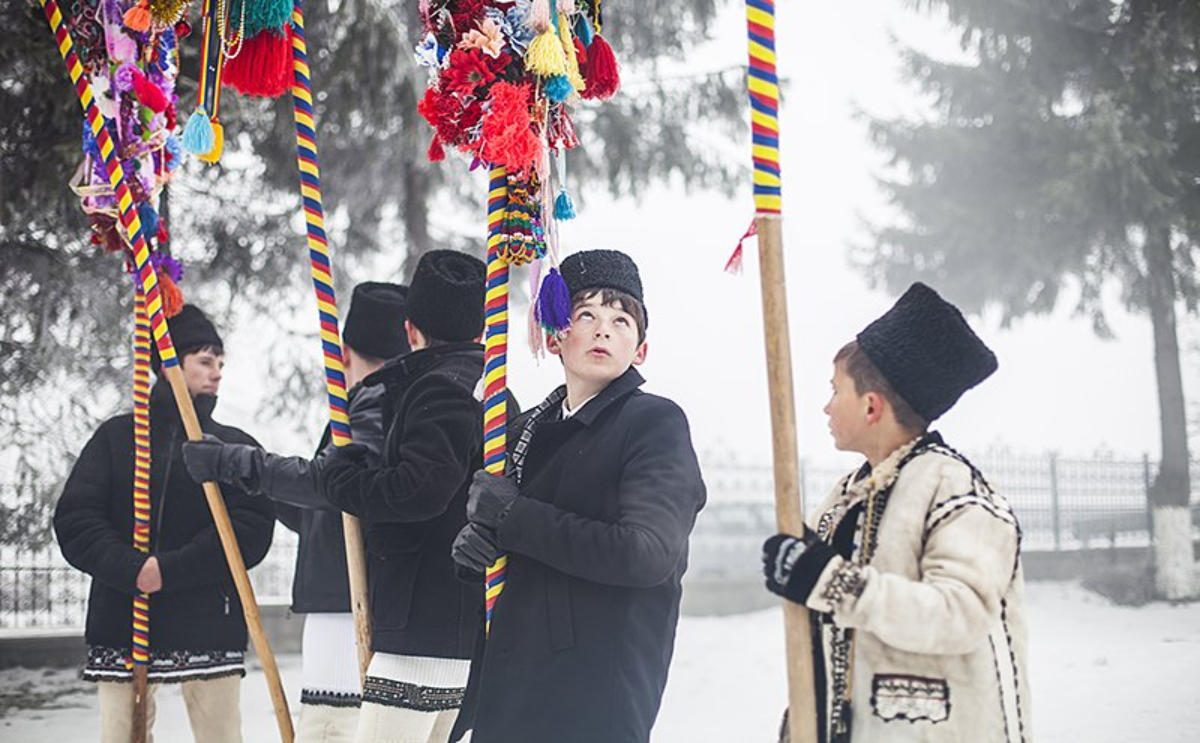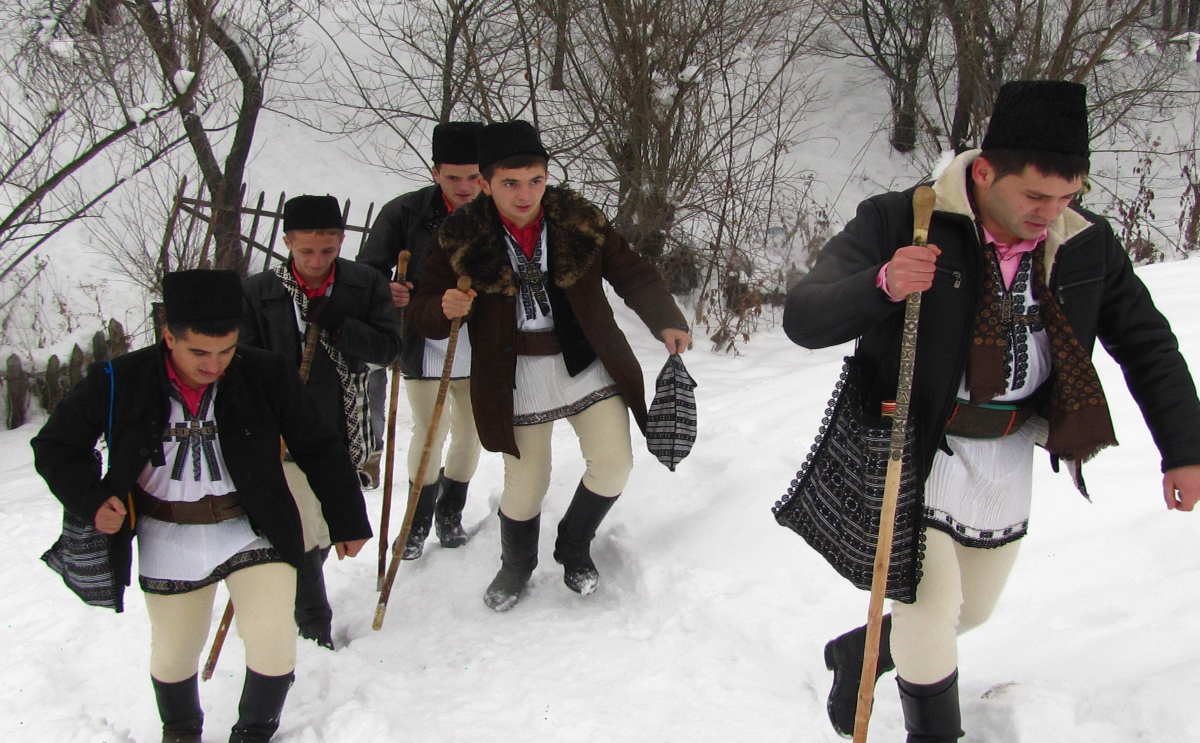Christmas is a time of joy and family. The tradition starts over a month before the celebration date and involve several customs and beliefs, from the traditional holiday meal to clothing, but also specific activities, such as Christmas gifts, decorating the tree, caroling, or performing different rituals.
The exact date of Jesus’ birth has never been accurately established. Tradition says that it has been celebrated since 98 AD. In 137 AD the bishop of Rome decreed it as a solemn holiday and later on, in 350 AD, Julius I, another bishop of Rome, chose December 25 as the Christmas date. But, even if the birth of Jesus Christ is celebrated on December 25, many of the customs related to this date are pagan.
The fast.
Because the majority of Romanians belong to the Orthodox cult, before Christmas, they fast for 40 days. It recalls both the fasting of the patriarchs from the Old Testament, as well as the waiting of Moses on Mount Sinai, before he received the tablets with the Decalogue. During the fasting period, believers are not allowed to eat meat, cheese and eggs. Instead, there are different days on which the release is given (fish is permitted), established by the church.
On December 20, Saint Ignatius is celebrated, a Christian martyr (110 AD) who, was thrown into the arena and torn to pieces by lions because he did not want to give up his faith in Christ. On this day, in the rural areas the people gather in the family for the ritual of slaughter of the pig.
It all begins in the morning, when the animal is sprinkled with holy water and placed with its head towards the east. On the forehead or the back of the neck, a cross is made with a knife, on which salt is sprinkled. The feast of Saint Ignatius combines some pagan customs with new, Christian ones. Ancient people – back from the Egyptians onward – use to sacrifice animals during the season transition periods, also and the pig is an ancient symbol of luck, abundance and fertility.
Christmas Eve
Christmas Eve has always been dedicated to carols. Small, large, they all started as such or disguised as famous holiday characters, at people's houses, to wish their relatives and strangers only happiness and luck.
Everywhere in Romania groups of carolers go to people's houses to announce the coming of Christ through carols. Depending on the area, carolers are dressed in traditional clothing, with embroidery specific to the place. People who are caroled offer nuts, pretzels, apples and, especially in urban areas, money. Another caroling custom is walking with the Star. It takes place on the first day of Christmas and evokes the moment from the Bible when the Magi followed the star to reach the stable where Christ was born.
It is said that God left carols on earth to rid people of their sins, and they will no longer be heard, the devils will end up among us.
On this day, the Christmas tree is also prepared, by those who stay at home and welcome the carolers, but also special meals are prepared. The cakes and cookies that are enjoyed right away today were once kept until the coming of spring and placed between the horns of animals for the prosperity of the crops. In the old days, there was no lack of the presence of garlic heads in all corners of the festive table, on which 12 lenten dishes were added around a roll. This practice would ensure a better, more prosperous new year and proper celebrations.
In Transylvania, the animals were fed to their fill even with the pieces of leavened dough left over from kneading, the cattle were greased with garlic, and the fruit trees were tied with straw, these traditions adding to ensure the well-being and productivity of the animals.
Here, the Christmas celebrations started from St. Nicholas (December 6), when girls gathered in groups, from the evening of December 5, and kneaded cakes that would be smeared with egg, for two days. Only at 9 o'clock sharp in the evening, the flames started and the party heated up, with jokes and perfumed milk.
In Oltenia, the pillars and young people of the family dressed in festive clothes on the Eve and decorated sticks with which they caroled the land, and in Dobrogea the specific carols associated with a traditional holiday outfit, traditional songs and dances were meant to scare away negative spirits.
Christmas tree
The Christmas tree is decorated on Christmas Eve and symbolizes the infinite life, being evergreen. People follows this principle: the older ones took care of the house, the table, and the younger or middle-aged took care of the Christmas tree.
It always has a star at the top that reminds of the one that guided the Magi to Jesus. At first it was decorated with colored paper and biscuits, now the decorations are made of shiny globes, figurines, sweets, covered in tinsel and light installations.
Christmas food
The Christmas rich meal marks the end of about six weeks of fasting. At this holy meal, people can enjoy traditional dishes prepared by the hands of skilled women. The fresh meat from the pig cut on December, 20 is transformed into different dishes (sarmalele, piftia, druma, chisca and caltabosi), being is the attraction of the Christmas table, along with oven bread, salads and cakes.
Depending to the areas of the country there are specific holiday foods. For example, in Dobrogea they prepare carp brine, fried fish or stuffed pike. In areas with a predominantly Aromanian or Macedonian population, cherde, a pie with cheese and greens is prepared. Another specific type of food is the Christmas toros, which is prepared in the Bihor area. This is easy to prepare in a cauldron and contains fresh pork and cabbage braised in several layers, sprinkled with white wine.
Nowadays, traditional dishes have started to be reinvented. For example, the usual sarmale (minced meat stuffed in sauerkraut leaves) can also be made vegan: sauerkraut leaves are filled with mushrooms, sunflower seeds, carrots, onion and tomato sauce.
Reagrding the traditional activities, each region in Romania has different influences, so customs also differ, even from one county to another.
Transylvania
Here the carolers start walking on Christmas Eve in a specific order: first the little children, then the schoolchildren and then the children. If the first ones receive nuts and rolls, the older ones collect wine from each family in a barrel or other gifts, especially from the houses where there are marriageable girls.
In Bistrita-Nasaud county, the "belciugarii" tradition is still preserved. On Christmas Eve, young people dress up in different characters - goat, soldier, bear, groom, bride, doctor or policeman - and play a theme in each house they visit. It is believed that the households where the belciugarii were will be rich in the following year.
Moldova
In Bucovina, the Christmas Eve is the holiday that is kept, perhaps, more quietly than in other parts, without major deviations from tradition. On Eve, women use to hide the spindles of the spinning fork or insert a stone into the oven, believing that in this way they remove the snakes from around the household. In the morning of the same day, it used to be, until recently, for the woman to go out with her hands full of dough, go to the orchard and touch each tree saying: ..as my hands are full of dough, so may the trees be loaded with fruit In the year''.
A tradition that is still preserved is that of colacei (curly cakes). On Christmas Eve, women bake dough in the shape of an incomplete eight, which is then hung on the wall, next to the icons, until the spring equinox. When the man goes out to plow, he breaks the roll into three: one piece he puts under the furrow, one he gives to the animals and the last one he eats.
The caroling, as the culminating moment of Christmas, has been preserved with great accuracy in N Romania (Bucovina region). The ritual is opened by the children, who, around lunchtime, in small groups, start caroling, passing, one by one, the village households. In the past, the little carolers, before leaving to announce the birth of Jesus, gathered in groups to ask forgiveness from each other. At dusk, the villages are animated by the carols of the groups of flamers who cross the streets, from one end to the other of the village, throughout the night. Even today, young people dress in traditional winter costumes, the hats being decorated with myrtle and geraniums. The leader of the group has a hat decorated sign with multicolored ribbons. Until the middle of the 20th century, the accompaniment of the carolers was performed only with the whistle and the flute, so that later the accompaniment with the brass band or with modern musical instruments became general.
Also related to food is the tradition of the 12 apostles. Remembering the Last Supper, the women of the household cook 12 dishes that they put on the table since Christmas Eve. The round cheese cake, which symbolizes the crown of Jesus, must not be missing from the table.
In Oltenia (Jiului Valley), a custom has remained since the time of the Dacians, called Pitaraii, men who start caroling carrying sticks decorated with naframe (kerchiefs), crowned with flowers and bells. The custom symbolizes the sacrifice brought to the divinity for the fruitfulness of the harvest. Also in this area, it is customary for people who go to caroling to be led by a foreman (vataf) that has the role of being the first to enter the human household, where it will poke into the fire. Then, he receives a pumpkin shell full of seeds of flax, hemp, corn, wheat and pumpkin, which has to be thrown in the corners of the household so that the next year will be rich and fruitful.
In the same region, the most widespread carol is "Steaua", sung in groups of four. Each member of the gang has a responsibility: one is the bearer of the star, one handles the collection of money and nuts, one holds the sack and one carries the club, used to defend against dogs.
Also, in this area we find groups of stoners, with the specification that only men, young people or children can be part of them. Dressed in folk clothes, they start caroling the night before Eve. They carry with them flags with bells, colored ribbons, tassels and flower crowns which they hang on tall poles.
When you go caroling in NV of Romania (Almaj valley) or in Banat region, the carolers have a stick made of hazel wood with which they hit the floors of the houses they visit, in order to ward off evil spirits. It is believed that the hazelnut has the power to ward off snakes, protect the household and bring prosperity. Also in this area, on Christmas Eve, the fire in the house should not extinguished at all, because it is believed that this way the next year will be bright and rich. Also, the tree is decorated with sweets, and under it is placed a roll, a sausage and a bottle of brandy, which will serve as gifts for Santa Claus.
Dobrogea. In Luncavita there is people called Mosoii that are going to carol. They wear a long coat, made of fox or rabbit fur, colorful masks, ram's horns, the costume being decorated with multicolored flowers and beads. The masks symbolize the ancestral spirits that ward off evil and announce a prosperous year.
The people from Dobrogea do not go with the "Goat", but with the "Ostrich". The traditional costume consists of a thick woolen fabric to which are tied bundles of reeds and other plants from the banks of the lakes. Here you can also find old men, carolers with colorful masks. The wearing of masks symbolizes the presence of ancient spirits that drive away all evil from the birth of baby Jesus. These carols herald a more abundant, peaceful and joyous year. In addition to the masks, the old men also have a long to the ground, turned inside out, made of fox or rabbit fur, ram's horns and multi-colored ribbons.
Interesting to mention that certain superstitions were also passed down from the ancestors. These refer to various customs, from food to washing water, all done with the aim of attracting abundance and warding off evil spirits:
- on Christmas morning you must wash yourself with water in which you put a silver object and a nut; thus, you will be healthy and you will have luck with money;
- it is mandatory to give at Christmas; if you do not do it, you will not have prosperity;
- nothing is given on loan, but neither is the object borrowed from another time accepted.
- it would be advisable not to consume brandy, because this is considered the drink of the Devil;
- on Christmas Eve if you throw away anything from the house you will give away the luck; Also, Garbage is not thrown away, because it is believed that you drive your good and wealth out of the house with it;
- on Christmas Eve, the first person to enter the house must be a man; if not, you will have bad luck;
- it's not good to fight someone, even jokingly, unless you want to be full of pimples all year;
- if you wear new shoes for Christmas, you will have bad luck;
- if you eat apples on Christmas Eve, you will be healthy all year;
- on Christmas day you don't have to clean or throw away the trash, because you will also throw away your luck.
- it is not good to receive guests in the evening between Eve and Christmas. Luck will disappear from the house if you open the door on this magical night.
- Be careful not to get caught in the barn full of hay on the night of Eve or to sleep in the hay, because you risk getting mentally ill. The oxen take on a human voice this night, telling about the birth of the Lord, and this must remain hidden from the ears and eyes of the people.
- it is not good to put your hand on the scythe, axe, pitchfork or axe, before sunrise. Otherwise, you will hate working for them and it will not be good for you.
Other superstitions and beliefs:
People from Moldova don't only decorate fir trees, they also take care of their houses, which they decorate with various evergreen plants. Unmarried women can dream of their fates if they put a little of all the cooked food on the porch of the house, in a pot. Once upon a time there was a tradition that has been lost today: placing hands full of dough on the bark of trees in the orchard to be loaded into the next year. In addition to carolers in the popular national anthem, in Moldova you can also meet "babe și moşnegi" (old women and old men) on the streets, groups of masked people who, through games, gestures and dialogue, convey wishes for the coming year.
In Transylvania, after caroling from gate to gate, young people prepare for the “grandfathers game”, an old tradition from Maramureș, at the base of which is supposed to be the mask ceremonies during the night, in honor of the sleeping ones. A few old men, with fur masks and whips knock on people's doors to scare them and wish them a better year than the previous one. In other villages, another tradition by which the boys gather in a group, each with a clearly defined role, with the aim of collecting wine for the party in the last week of the year, is still preserved. Rockies can still be seen roaming through such areas, with nuts, crackers, and rolls in their pouches.
Another storied tradition from this area is the Christmas of the Beasts. At dawn on the last Sunday before Christmas, an "apprentice" boy is sent to the edge of the village to choose one of the masks hanging on a tree. The masks caught by the village girls the night before represent the evil spirits. The young man with the mask on his face becomes the "bush" of the village, a personification of the wolf, seen as a protector of the forests. He walks through the village with a group and is received by the men of the village in the courtyards, served with food and drink. Women are forbidden to get in their way, so as not to risk being haunted by wolves for the rest of the year. At sunset the mist of boys offers a sacrifice to the animals of the forest at the mouth of a deep cave.
If you want to be lucky in the coming year, try fasting on Christmas Eve. Envy, anger, quarrels and blows are not allowed on this day.
Faith says that everything you do, good or bad, will come back to you: if you punch, you will get back as many punches as you gave. So that the birds don't spoil your spring sowing in the garden, it's good to wake up before sunrise and throw seeds towards the sunrise to the birds in the yard. Then sweep the whole house, and the critters will stay away from your household all year.
Collect all the garbage from the house and the ashes from the hearth, before eating. Store them in bags until spring, when the layers are made in the garden. Sprinkle the ash mixed with garbage over the layers, to protect the crops from pests. In the country, the women who keep this tradition are used to say the following charm, while they sprinkle the ashes: "As I did not eat the mornings of the Eves, so do not eat even a lick of the fruit".
If you want to know who is destined for you, put all the food in a bowl, on the window sill, without tasting the food. The belief says that the chosen one comes to you at night, to taste your food and then you can see it from the window.
Another belief says that eating fish on Christmas Eve will protect you from colds all year.
Children who eat baked pumpkin on Eve will also be healthy. In some houses, the housewives grease the bread or corn flower cakes with a mixture of flour, water and eggs, before putting them in the oven, so that they don't crack. What remains of this mixture is used to anoint the tree in the garden. Thus, the trees will be loaded with fruit, just as the Christmas Eve table is loaded with food. After the meal, the men go to the garden with an ax or an ax and cut the trees that do not bear fruit. The women, with their hands full of dough, run after them to ask them to spare the trees. The ritual is repeated three times, with the belief that the trees will be frightened and bear fruit in the spring.
On the eve of Christmas and the Epiphany Day (January, 6th), all the above foods are taken: wheat, gooseberries, etc., and then two pies, you first give one to the shepherd who goes with the cattle, but he must be a glutton, so that the cattle will eat well over the year and break the other into pieces to eat for the cattle. When you give them to eat, you say: "Have a healthy dinner like we do".
There is also a tradition to put a fan under the table, and all the seeds to gnaw, then give them to the cattle, and especially to the cows, so that no one can harm them.
In some areas, on the evening of Eve, the scythe is placed under the table, so that everyone is healthy, and the ax under the feet; others sit on the ax, so that they will be healthy and strong over the year like iron. People put a bucket of water under the table, so that the cattle will do well.
In the villages there is still a belief that on Christmas night the animals would talk. The villagers are afraid that they might hear them, that this would be a bad sign.
The day before Christmas, the villagers put a horseshoe in a bucket of water. First the householder will drink it, then he will give it to the cattle, so that they will be strong as iron. The chickens will be given food from the chicken or sieve, so that in the following years they will lay more eggs. The shepherds place a wrapped salt pan under the threshold of the house, which they leave there until the choice of the sheep. Then I take it out, grind it and mix it with bran, after which I give it to the sheep, so that the flock increases.
The chimneys are cleaned, and the soot is placed at the roots of the trees, in order to have a richer fruit.
In the areas of Fagaras and Mures, it is customary to put 12 plates on the table on New Year's, under which different objects are hidden. Girls and boys or pairs of girls and boys enter the house in turn and each of them turns over a plate and what is under the plate shows them that this is how they will be treated or that this is how their luck will be if they want to get married: mirror = pride; the glass of tuica = drinker; bread = wealth; coal = black to the soul; salt = poverty; the pencil = gentleman; money = wealth. The people are making fun of these predictions.
The stone masons use to fast on Christmas Eve. As long as they are at work, in the field, their meal is the "tarina" (the earth). Before sitting at the table in the evening, they sit on their knees and perform a magical ritual of tying the stone. The stone is invoked three times, while the masons tie knots on a thread of hemp thread left in the field. These magic knots will be used to enchant the stone in the field.
Photo credit: romaniajournal.ro

